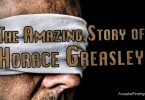If you’re not a family historian, you may not realize that there are many styles of tartans. By looking at them, some may believe they're simply attractive fabrics from Scotland's history. The truth is that tartans have their own history. They identify the person wearing the colors, and they even show where the person is from. By looking at a tartan, it's possible to get the history of a clan; even today's modern tartans are still historically based.
What's interesting about tartans is their extreme popularity. There are generic tartans sold as “plaid,” and there are also tartans registered all over the world for businesses, U.S. states, and the military. In every case, the tartan itself can specifically identify the person or organization wearing it.
What Exactly Is a Tartan?
Tartan is a woven material. It is usually woven out of wool, and it has stripes of various colors and with different breadths between them. Essentially, a tartan looks like it's plaid, but there's much more to it than that.
When woven together, a tartan appears to have squares in the pattern, and these squares are known as a sett. The sett is the completed pattern and is repeated throughout the length of the material.
When a tartan is ordered, many are made to order. The professional weavers lock together the specific tartan for the clan member or organization in question. The weaving industry today still specializes in hundreds of tartans and can make new tartans on request.
When Did Tartans First Appear?
It's thought that tartans first appeared to the west of Northern England. That could be western Britain itself or Ireland. The first people to wear them would have been Celtic; the Celts Scoti, in particular, who was known as the Scots and were based in Ireland, wore tartans to identify themselves. The first tartan discovered by historians is known as the Falkirk tartan; it is made of only two colors with a checkered pattern. It was brown and white, just like the Soay Sheep, which is native to Scotland. It was not worn but used for other purposes.
The age when that first tartan was discovered was around the 3rd century AD. From there, it continued to grow in popularity among royals and clans.
Why Do We Call It a Tartan?
Tartan has not always been known as tartan, but the word has developed over time. The Gaelic language defines the word for tartan as breach an, but the French word, tiretaine, maybe where the word actually comes from today. The French word describes materials of wool or linen mixes.
How Does a Tartan Help Identify a Clan?
There are literally hundreds of tartans in existence today, and they are very specific to their clans and the location of those clans. For instance, the Maclean tartan for hunting is black, white, and green, while the McDonells tartan has a triple-striped tartan. Essentially, the clan's tartan is a uniform that all men, and sometimes women, wore, at least in some part of their outfits.
The “Key Pattern Book” of 1819 discusses the exact methods for weaving over 200 tartans. These may not have been original or historical patterns, which is why when some tartans are sold today, they're marked as modern tartans for the families.
Tartans are still being developed today, interestingly. In fact, the Scottish Register of Tartans in the United Kingdom does allow new tartans to be registered from around the world.
What Are Some Tartans and Their Identifications?
There are hundreds of tartans in existence, but some of the most popular should be easy to identify if a person is aware of the tartan's history. Here are some of the most common tartans today.
The Royal Stewart
This is a red, yellow, white, blue, and black tartan and is one of the most recognizable in the world. Those wearing it have a history of being in or are related to the House of Stewart. The tartan originated in the lowland clans of Scotland.
The MacDonald
This tartan is green, blue, red, black, and white. It represents the highland clan MacDonald of clan Ranald in Scotland.
The Clan MacLeod
One of the most recognizable for its bright yellow, black, and red design this the tartan for the MacLeod Highland clan in Scotland.
The Clan MacLean
Basic black, white and green make up the tartan for the clan MacLean in Scotland.
The Clan MacKenzie
This Highland clan has a creative tartan with tight setts of blue and green. Blue, green, white, and red adorn this tartan.
The Clan Buchanan
A simple white base with red setts and a black stripe creates this highland clan's tartan.
The Clan Douglas
This lowland clan from Scotland has a simple black and gray tartan.
The Clan Montgomery
The lowland clan has a two-color tartan of blue and green.
The Clan Cunningham
Black, white, and red make up this lowland clan's tartan.
The Clan Rose
This lowland clan has a tartan made up of blue, white, red, and green.
Each clan has its own respective colors, and even if they share colors, the setts tend to be of varying sizes. What's interesting today is that many people have registered their own tartans from around the world; for instance, West Virginia University in the United States registered a gold, blue, and white tartan; the U.S. Air Force Pipe Band has a red, blue, and yellow tartan registered, and Nevada, the U.S. state, has registered a yellow, blue, and red tartan.
Knowing the history of tartans can help you identify the people wearing them, just as recognizing today's tartan colors can. There are various registries with photos to help identify tartans from around the world.




